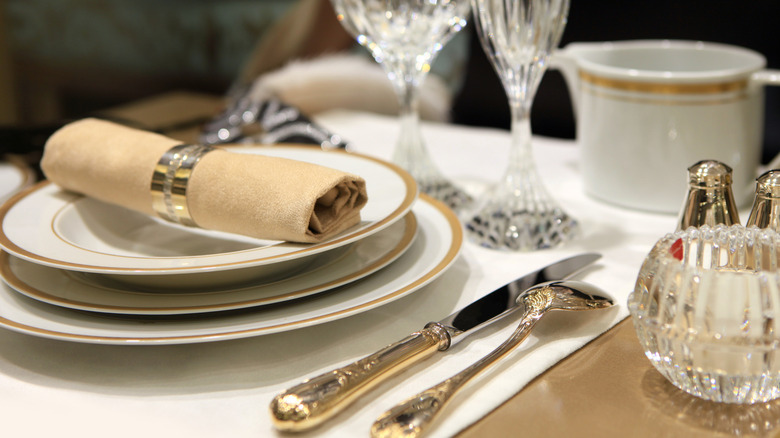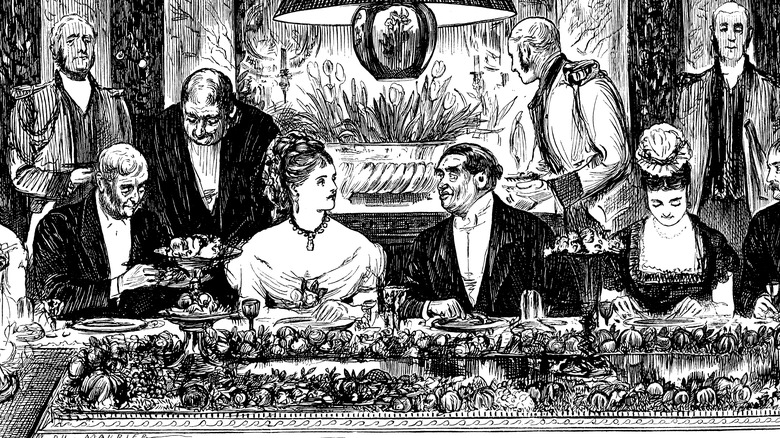The Obsolete Restaurant Etiquette Rule That Never Made Sense To Begin With
At best, practicing etiquette makes people feel welcomed and valued; at worst, it imposes archaic norms for its own sake. Perhaps nowhere is the latter more evident than in the (thankfully now mostly obsolete) practice of men standing every time a woman approaches or leaves the table during a social meal. This practice is not only outdated but also rather patronizing.
The absurdity of some dining rules doesn't require much deconstruction to justify relegation to the dustbin of history, but there are still plenty of reasons this particular etiquette rule never made sense in the first place, even beyond its sexist nature. Imagine, for example, a woman needing to excuse herself multiple times because the food doesn't agree with her. Should it flatter her sense of propriety to have all eyes on her every time nature calls? Now, imagine a single man at a table full of women — he'll likely spend more time standing than sitting.
Empathy for fellow diners is more useful than blind etiquette in facilitating smooth social interactions. For most dinner situations, reading the room is the best strategy for smoothing over the practical nuances of dining with peers.
Why is standing for guests even a thing?
Etiquette is fundamentally steeped in the relativism of its time and place. The origin of standing for women approaching the table is rooted in chivalric dining etiquette rules. In Victorian England, aristocratic couples were seated at the table in order of social rank, with women seated first. Such precedence was as much about gallantry as physically assisting women encumbered by tight corsets to sit down. Later, Edwardian (male) hosts would remain standing until all guests were seated as a show of service. The practice filtered down to restaurant meals as well, but thankfully is now virtually obsolete.
It's important to realize that while historical displays of etiquette may have had a specific rationale, it doesn't mean they ever actually made sense. Yes, women in corsets benefitted from a helping hand to their seat, but why were they wearing corsets to begin with? Why should the simple act of eating be so heavily encumbered by hierarchical subtleties?
Nowadays, standing as someone (of any gender) enters a social space is a general but optional courtesy. It demonstrates that you recognize and welcome their presence — and physically facilitates a handshake or embrace, to boot. Modern interpretations of etiquette focus less on specific rules in favor of overarching principles that foster respect, consideration, and honesty. Adhering to strict etiquette outside of formal situations lacks emotional authenticity and may even undermine being a truly gracious host. If you must stand, do so because you want to — not because that's how it's done according to outmoded, nonsensical gender norms.

